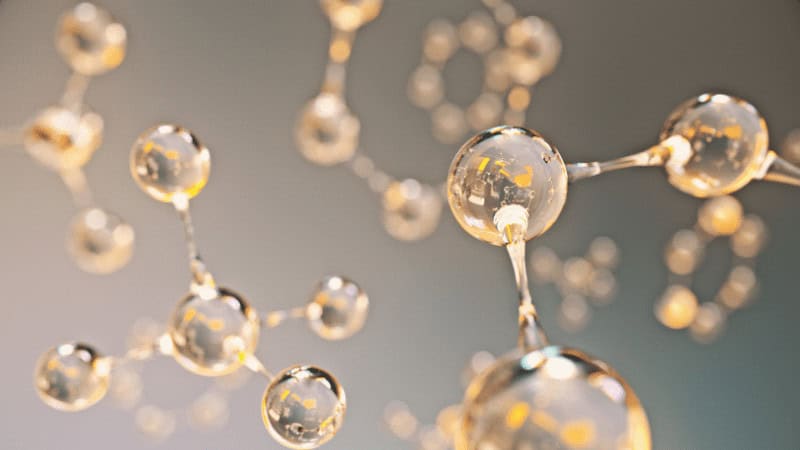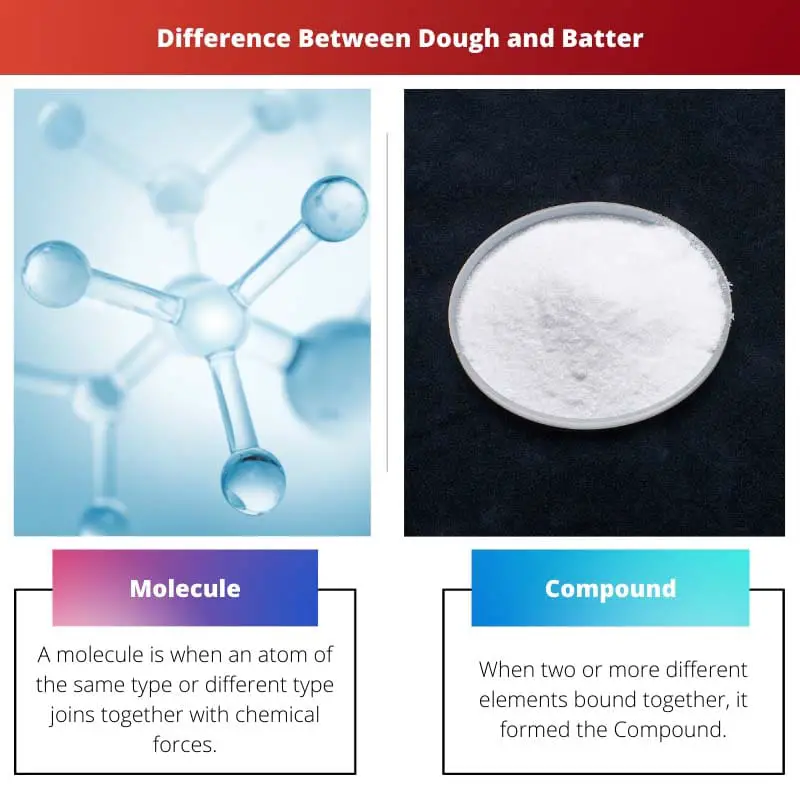Every material is made up of atoms that are very small in size. The atoms determine the characteristics and properties of any material or element.
Further, there are elements, matter, molecules, and compounds. The similarities between them are that they are made up of atoms, but still, they have different properties and functions because when two or more atoms combine, the chemical properties change.
Key Takeaways
- Molecules are the smallest units of a compound that retain the substance’s chemical properties, while compounds are made up of two or more different atoms chemically bonded together.
- Molecules can exist freely, whereas compounds always exist as a combination of two or more elements.
- The physical and chemical properties of molecules can differ from those of the elements that make them up. Still, a compound’s properties differ from those of its constituent elements.
Molecule vs Compound
A molecule is a group of at least two or more atoms bonded with a chemical force. In contrast, a Compound is a group of chemically bonded Molecules of different elements. Therefore, all compounds are molecules, but not all are compounds.

A molecule is formed when two or more atoms are combined with a strong chemical force, the structure of the molecule is not very definite, which makes it very unstable, and it can be either heteronuclear or homonuclear and have an Ionic or Covalent Bond. To see, molecule microscopes are required.
A compound is formed when two or more molecules of different elements together with a strong chemical force which has a proper shape and which is very stable. They are always made up of various factors and have Ionic, Covalent or Metallic bonds. And it is evident in a compound typically.
Comparison Table
| Parameters of Comparison | Molecule | Compound |
|---|---|---|
| Meaning | A Group of 2 or more atoms is a molecule. | A Group of Molecules of more than one different element is a compound. |
| Relation | It is not always a compound, for example, hydrogen. | Compounds are always molecules. |
| Structure | It doesn’t have a uniform structure and is unstable. | The actual matter has a uniform structure and is stable. |
| Visibility | It is very tiny and cannot be seen by the naked eye. Microscopes are required. | It is easily visible to the naked eye. |
| Example | Ozone and oxygen | Baking Soda and Salt |
What is Molecule?
A molecule is when an atom of the same or different type joins with chemical forces. The molecule’s mass depends on the atom it is made up of.
- Diatomic Molecules are a type of molecule when only two atoms of the same or different elements are bonded together, such as Oxygen and Carbon Monoxide.
- Heteronuclear Diatomic Molecule: it is a type of molecule when only two atoms of the same elements combined, such as Hydrogen, Oxygen, and Chlorine.
- Homonuclear Diatomic Molecule: it is a type of molecule when two atoms of different atoms combine, such as carbon monoxide, hydrochloric acid (HCl), and Hydrogen Fluoride.
Complex molecules: These are molecules of carbon atoms bonded with other elements. For example, Sucrose, in which carbon atoms are bonded with Hydrogen and Oxygen.
Macromolecules: these are giant molecules; they comprise nearly 1000 atoms bonded together, such as proteins.
Molecular Formula is a formula that represents the chemical proportions of atoms, numbers, and elements and is used explicitly for this purpose. For example, the molecular formula of Acetic Acid is CH3COOH.

What is a Compound?
When two or more different elements are bound together, they form the Compound, for example, water, carbon dioxide, and many more. All compounds are molecules.
- Molecular compounds: in molecular compounds, the atoms are bonded together with covalent bonds, for example, water and carbon dioxide.
- Salts: in salts, atoms are bonded together with Ionic bonds, for example, Sodium Chloride and Ammonium Chloride.
Characteristics of Compound
- Unlike molecules and atoms, it has a definite mass and structure and is highly stable.
- When two or more types of molecules combine, their individual properties change, and they have new chemical properties as a compound.
- It is not possible to separate the constituents of compounds by any simple process.
- Its melting and boiling points are both fixed.
- It is always homogeneous.
Every compound has a different molecular formula; the most common compounds and their molecular formula is:
- Alcohol: C2H6O
- Acetic Acid: C2H4O2
- Sulphuric Acid: H2SO4
- Ammonia: NH3
- Methane: CH4
- Nitrous Oxide: N2O
- Salt: NaCl

Main Differences Between Molecule and Compound
- A molecule is when two or more two atoms are bonded tighter together with a chemical force, whereas a compound is when two or more molecules are bonded tighter together with a chemical force.
- Every compound is made up of molecules. Therefore, every compound is a molecule but not with the molecule.
- The compound has a definite structure and is more stable, but the molecule has no solid structure. Therefore, it can be unstable.
- A molecule is so tiny that it cannot be seen easily by the naked eye. Special equipment is required, but the compound can be seen very easily.
- Molecules have an Ionic or Covalent bond, but compounds have an Ionic Metallic or covalent bond.
- Molecules are either heteronuclear or homonuclear. Whereas compounds are always made up of different elements, if there are the same elements, it is not a compound.




